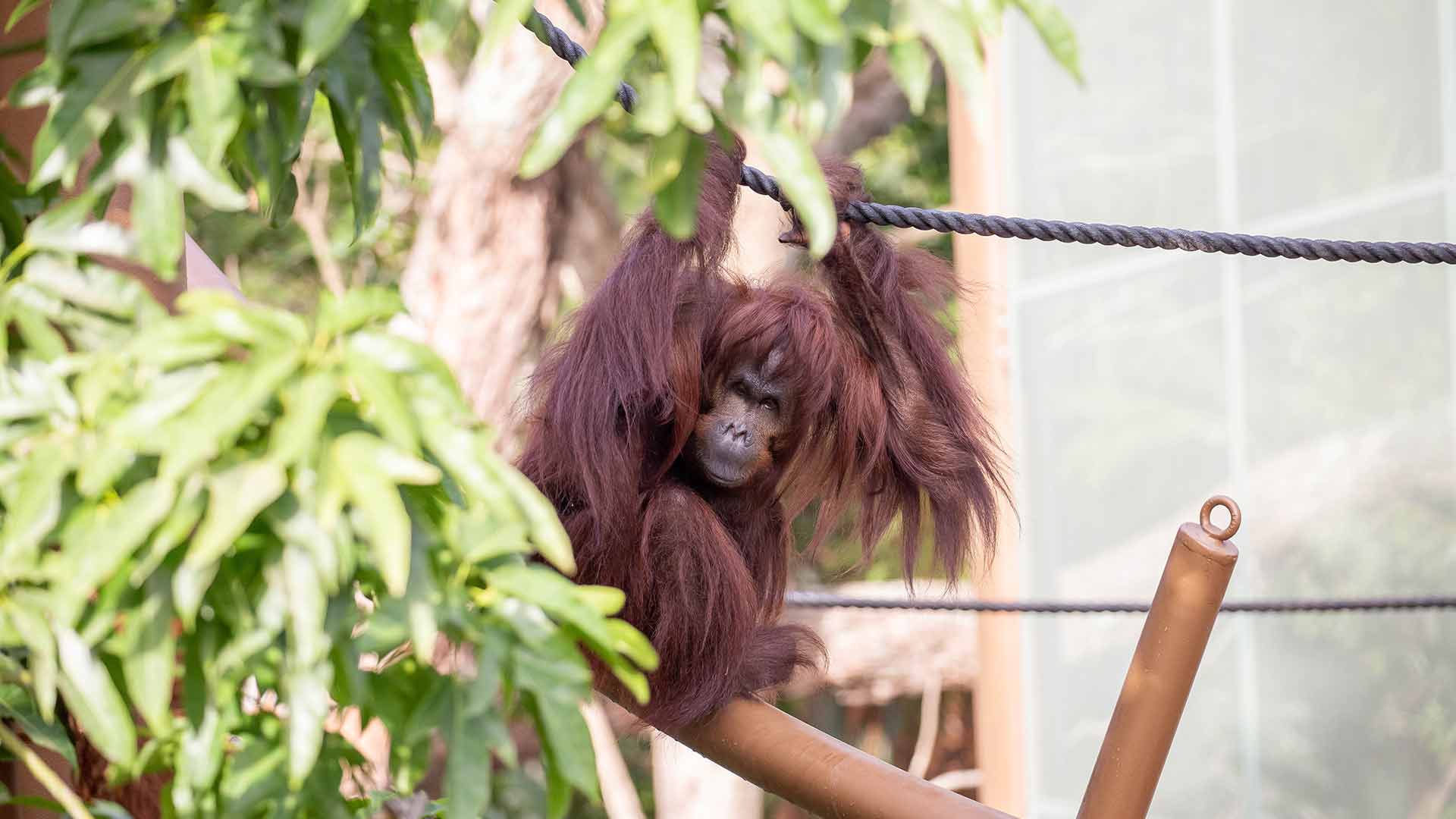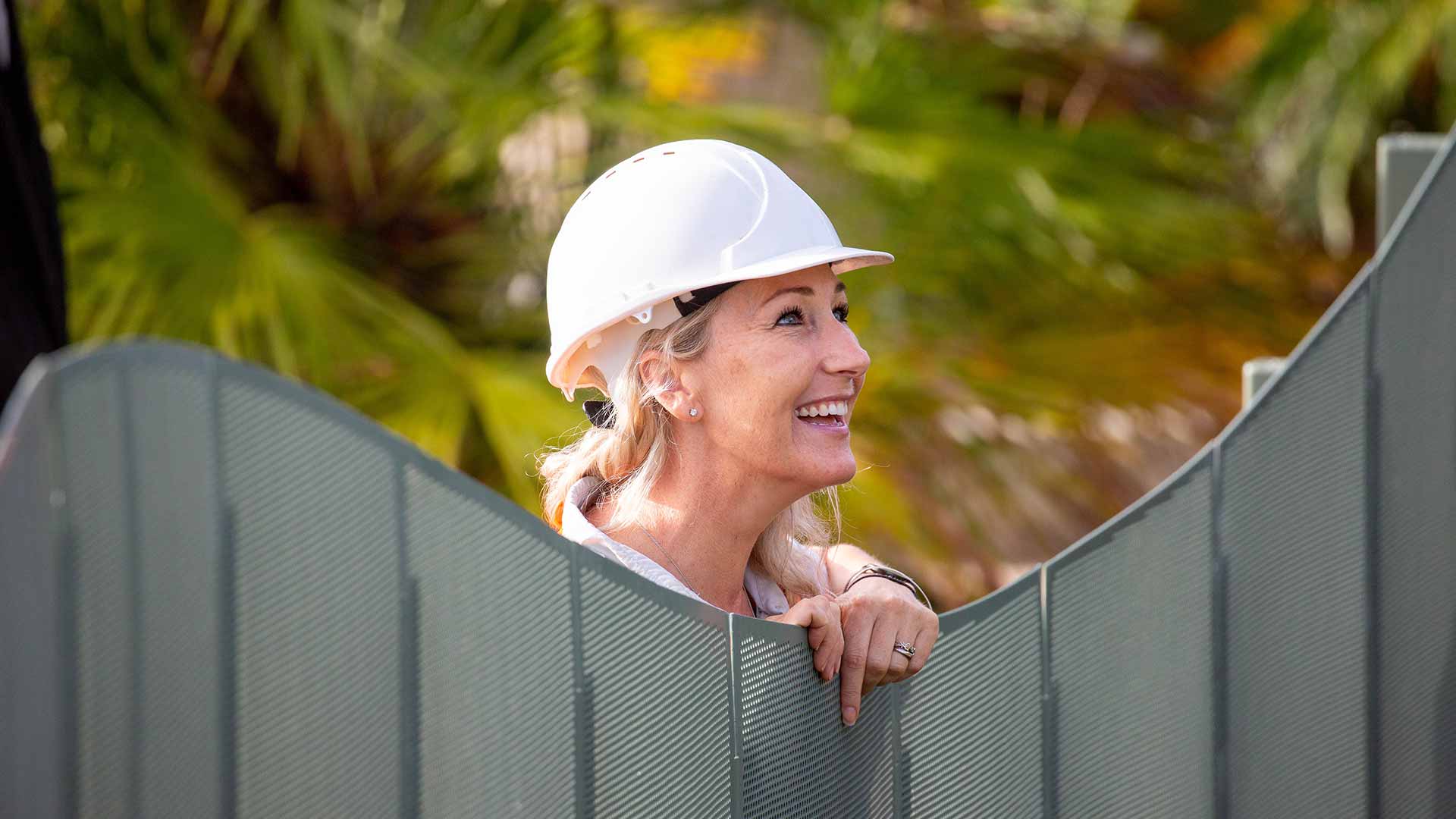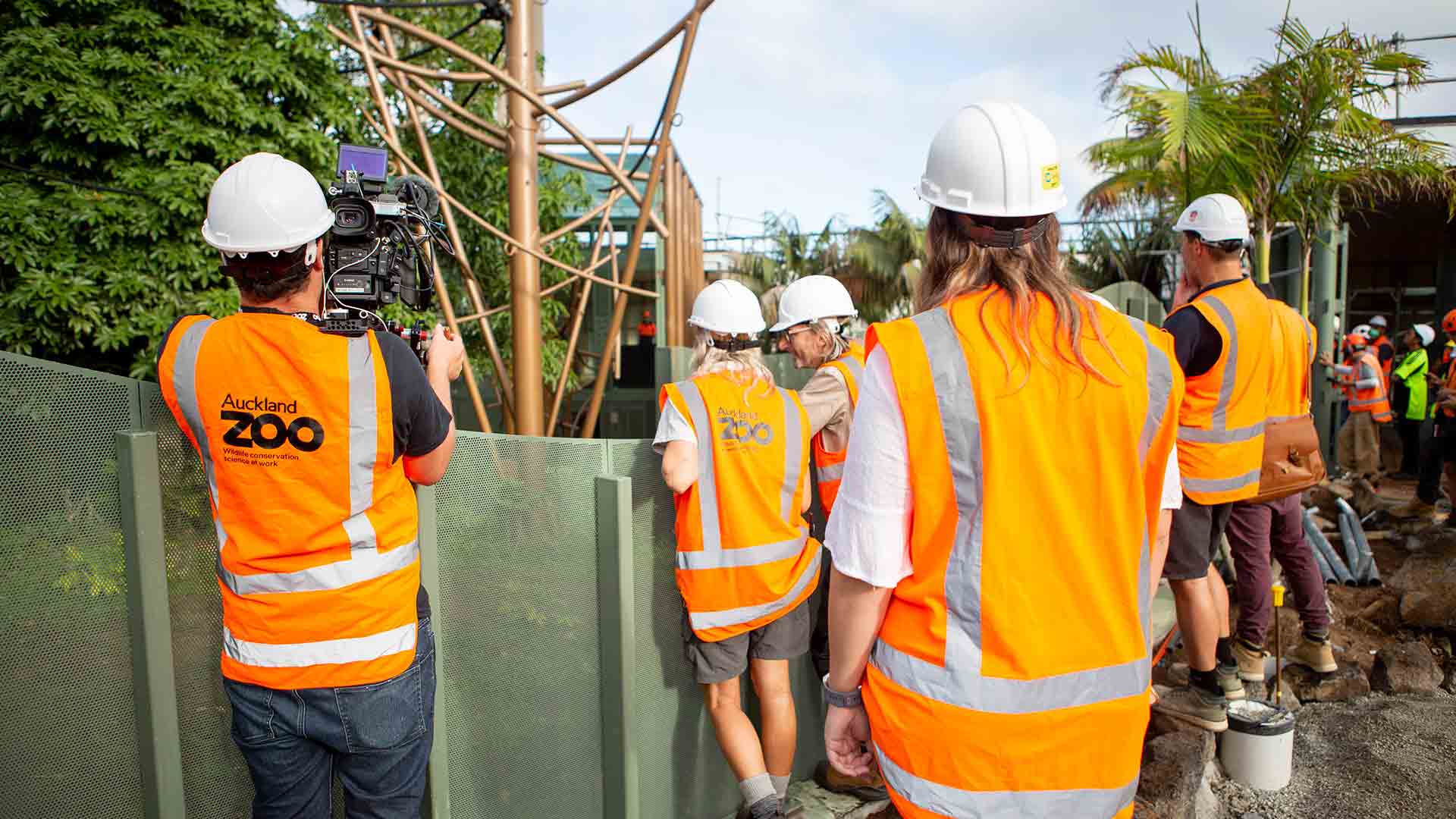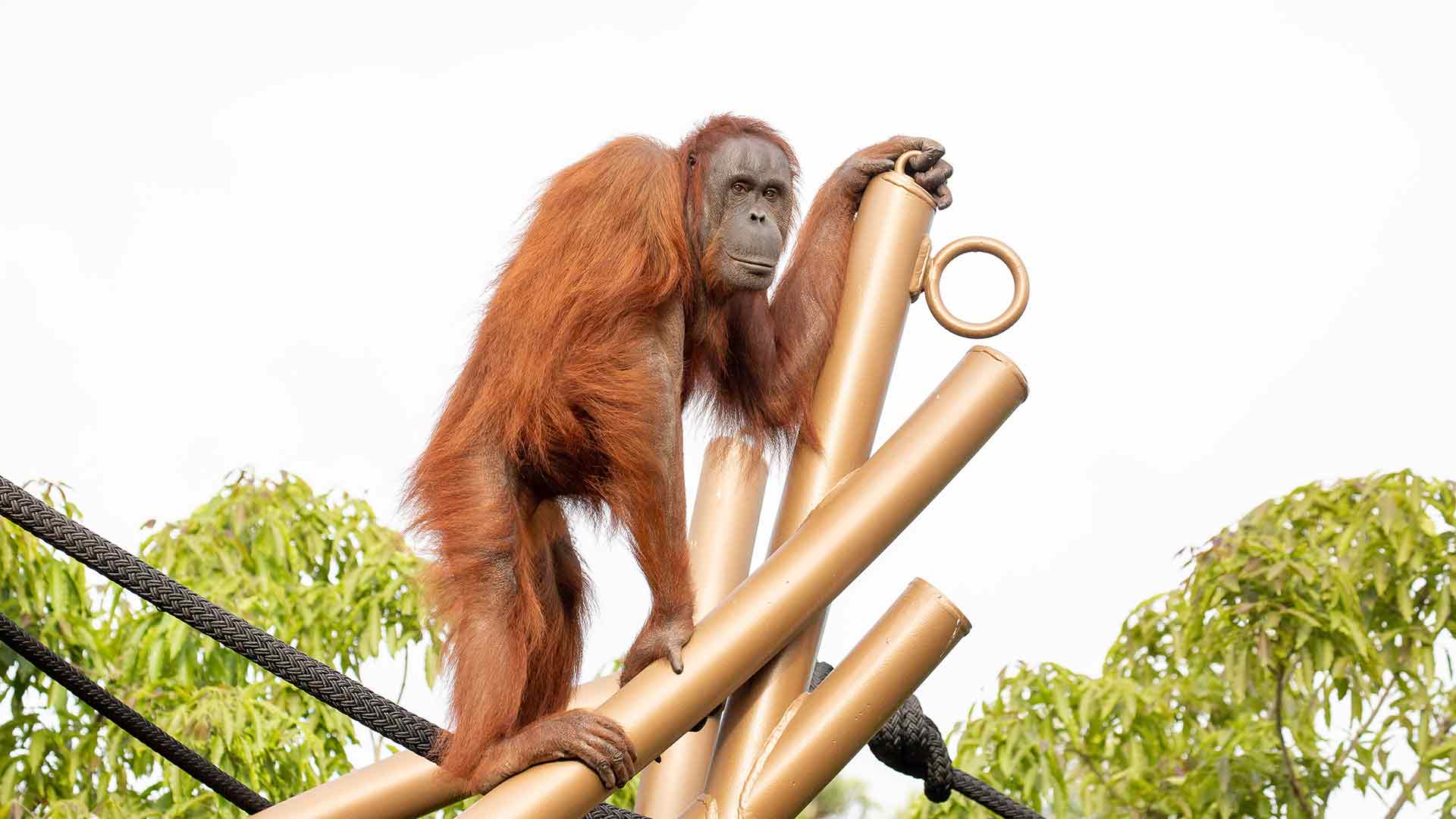The excitement in the air was palpable, accompanied by an undercurrent of nervous energy, and the knowledge that there was only one chance to get this right. Days like this don’t come along very often – ones that are the culmination of over two years of emotional rollercoasters and hard work.
Auckland Zoo is undergoing the biggest redevelopment in its near 100-year history in the Zoo’s new South East Asia Jungle Track and part of this has involved building a world class habitat for the orangutans and siamang. Amy Robbins, Team Leader of Primates, personally travelled the world exploring and hand-picking from the best primate habitats that exist today, to create her vision for our beautiful Bornean Orangutans – Charlie, Melur, and Wanita.











